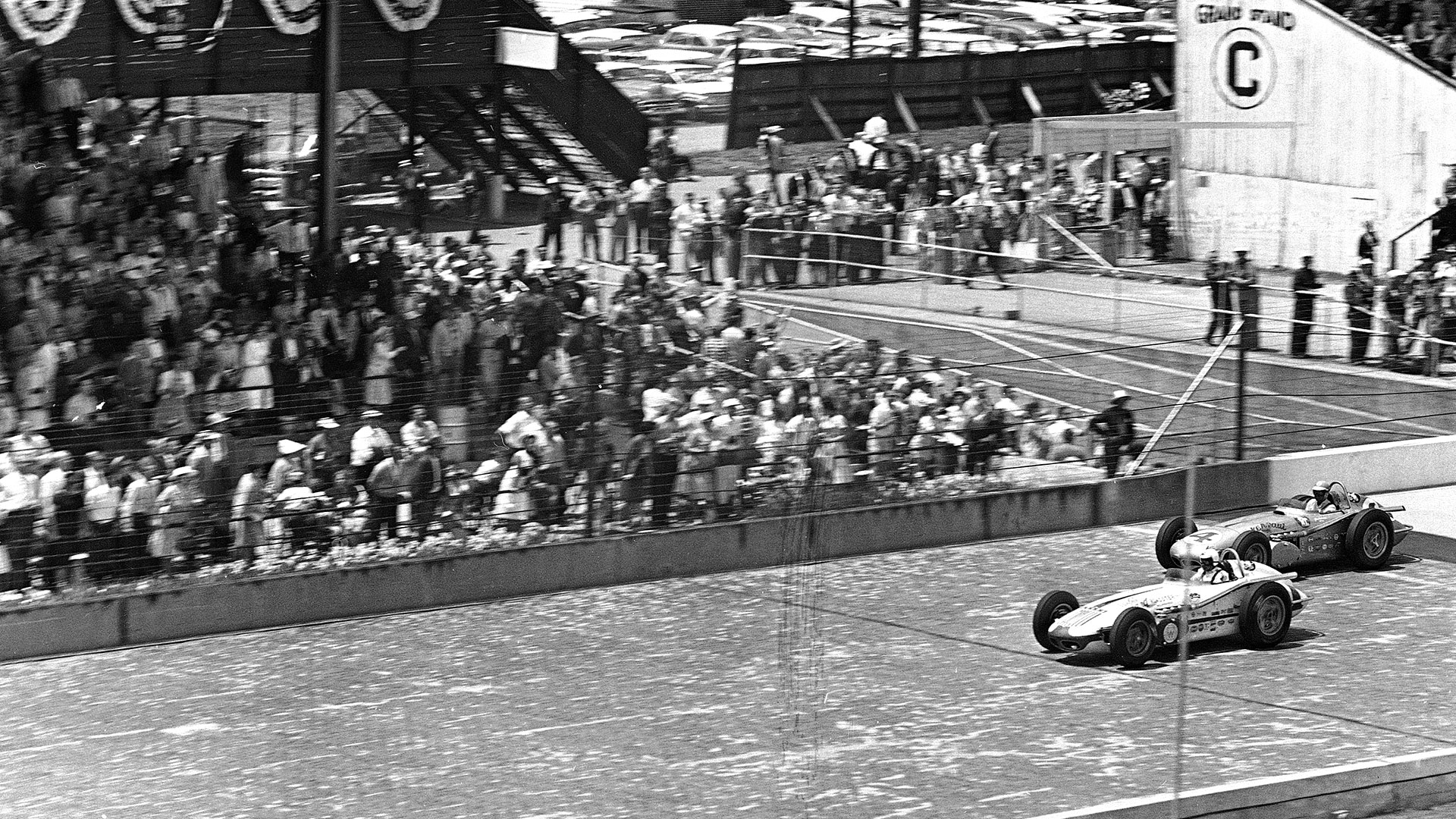

You probably don’t remember much of 1960. But it was a fascinating and unnerving year. The most powerful earthquake ever recorded to this day (9.5 magnitude) struck Chile. The FDA approved the birth control pill. Swiss explorer Jacques Piccard and American Don Walsh became the first to dive in a manned vessel to the deepest part of Earth’s oceans—the Mariana Trench (35,797 feet, nearly 7 miles down). The Soviets shot down an American U-2 reconnaissance plane. The first televised Presidential debates aired—JFK versus Tricky Dick Nixon. In November, JFK won the election to become the 35th President of the United States.
But for gear heads, it was the 1960 Indianapolis 500 that sticks out. Today, this race is often called “The Duel”—a bare-knuckle, all-out contest of speed between two drivers, Roger Ward and Jim Rathmann. “This truly was the greatest epic of all time,” the Indianapolis Motor Speedway’s official historian Donald Davidson was to say, years after. “From everybody I’ve talked to, it was the greatest two-man, ongoing sustained battle ever.”
On raceday, neither Ward nor Rathmann was on the pole. That distinction went to hometown favorite Eddie Sachs—the “Clown Prince of Auto Racing,” who’s own story was incredible. Sachs was from Allentown, PA (the same hometown as Lee Iacocca), and he had started out working at the Indianapolis Motor Speedway as a dishwasher in the cafeteria. He was obsessed with winning the 500. By the time he was killed, at Indy four years later, he’d been hospitalized 13 times and he’d had the left side of his face reconstructed by surgeons. In 1960, Sachs captured the Indy pole for his first and only time: 146.592 mph (a record).
Indy kicked off on May 30, 1960, with the usual fanfare. It was at the time the biggest race in the U.S. by far, and probably the biggest in the world outside of Le Mans. From the start, the action was non-stop. Roger Ward snatched the lead on the first lap, and from there, a record-setting number of lead changes unfolded, and the roughly 175,000 fans had their eyes stuck on the lead car as if by Krazy Glue. The lead changed 29 times over the course of 500 miles—14 of those between two drivers, Ward and Rathmann, during the last half.
The rivalry was anticipated, as these two had finished one-two the year before. Ward, of Los Angeles, was the defending champ. Rathmann—born Royal Richard Rathmann, of Alhambra, California—had never won the 500, though he’d had heartbreaking second place finishes on three occasions. The two were topping 180 mph on the straights, and 140 mph in the corners, nose to tail, sometimes side to side, one in the front on one lap, the other on the next, in four-cylinder Watson-Offfenhauser roadsters that were the state of the art racing machines of their day.
In the final miles, Ward could see from his cockpit that his tires were about blow. The crowds were roaring as loud as the engines. The announcer in the booth: “It’s a shame somebody has to lose this race—these two fellas driving 500 miles, just neck and neck!” Rathmann captured the checkered flag—the only time he won it in 14 tries. “Roger was a good driver, and a nasty guy,” Rathmann said years later. “Nobody was gonna beat me in 1960, to win that race.”
The 1960 Indy 500, by the numbers: 29 lead changes, a record that stood for the next 52 years; Ward led 10 different times, the most ever to this day for a driver who didn’t win; pole speed: 146.592 mph; average race speed: 138.767 mph; time of race: 3:36:11; margin of victory: 12.75 seconds.
But enough of our yapping. See the highlights for yourself here.
